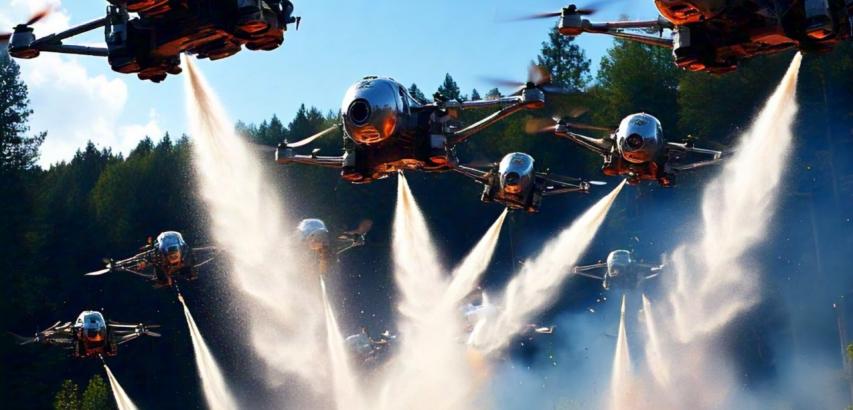Firefighting drones represent a groundbreaking advancement in emergency response technology, offering a faster, safer, and more efficient way to combat fires. Equipped with cutting-edge technology, these drones are designed to assist firefighters in handling dangerous and hard-to-reach areas, saving lives, property, and the environment.
Key Features of Firefighting Drones
Aerial Firefighting Capabilities
Drones can carry fire-extinguishing agents like water, foam, or fire retardants.
Ideal for targeting fires in high-rise buildings, dense forests, or inaccessible terrains.
Thermal Imaging Cameras
Equipped with infrared cameras to detect heat sources and identify hotspots.
Helps firefighters locate the fire's origin and monitor its spread.
Real-Time Surveillance
Provides live video feeds to commanders, enabling better decision-making and resource allocation.
Maps out the fire-affected areas with precision.
Autonomous Navigation
Advanced GPS and AI systems allow drones to navigate through smoke and obstacles autonomously.
Can operate in extreme conditions where human firefighters face significant risks.
Compact and Agile Design
Easily deployable, even in tight urban spaces or dense forests.
Faster response time compared to traditional firefighting vehicles.
Payload Options
Can carry fire extinguishers, sensors, or rescue tools, depending on the situation.
Some drones are capable of delivering life-saving equipment, such as oxygen masks, to trapped individuals.
Benefits of Firefighting Drones
Enhanced Safety
Reduces the need for human firefighters to enter hazardous environments.
Keeps personnel at a safe distance from flames, toxic smoke, and collapsing structures.
Faster Response Time
Drones can be deployed immediately, reaching fire zones faster than traditional vehicles.
Can operate in areas inaccessible by ground crews, such as remote forests or tall buildings.
Improved Efficiency
Identifies critical areas to focus firefighting efforts, reducing water and resource wastage.
Enables multi-tasking by monitoring, extinguishing fires, and rescuing at the same time.
Cost-Effective
Minimizes damage by attacking fires early and precisely.
Reduces the need for expensive equipment and prolonged firefighting operations.
Versatility
Can be used in urban fires, industrial accidents, wildfires, and disaster relief operations.
Useful for search and rescue missions, especially in areas affected by fire.
Applications of Firefighting Drones
Urban Fires
Drones can quickly access high-rise buildings and crowded areas to extinguish flames or deliver emergency supplies.
Wildfires
Effective in monitoring and controlling wildfires over vast areas.
Can coordinate with ground teams to contain the spread of fire.
Industrial Sites
Essential for handling fires in factories, oil rigs, and chemical plants where human access is dangerous.
Search and Rescue
Used to locate individuals trapped in smoke-filled environments or remote locations.
Challenges and Future Developments
Battery Life
Limited flight duration is a challenge for prolonged operations.
Future drones may feature solar-powered systems or advanced batteries for longer missions.
Payload Capacity
Increasing payload capabilities without compromising speed and agility is an area of focus.
Regulatory Hurdles
Airspace restrictions and regulatory approvals can delay drone deployment.
AI Integration
Future drones may use AI to predict fire behavior and recommend optimal firefighting strategies.
Swarm Technology
Development of coordinated drone swarms to handle large-scale fires effectively.
Firefighting drones are transforming the way fires are managed, combining speed, precision, and safety to tackle one of humanity's oldest challenges. As technology advances, these drones will continue to play an increasingly vital role in protecting lives, property, and the environment, making them an indispensable tool in modern firefighting operations.
 |  |  |
